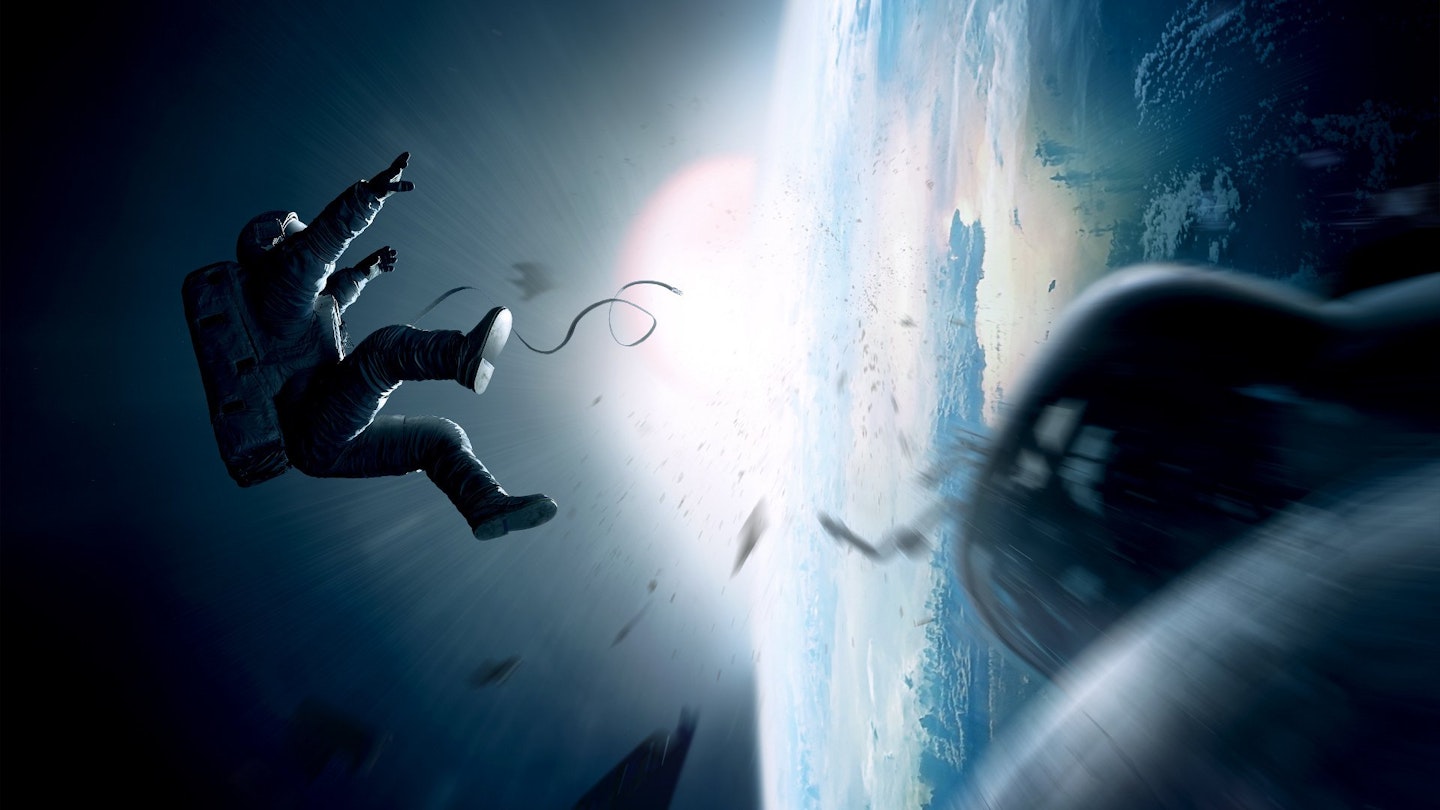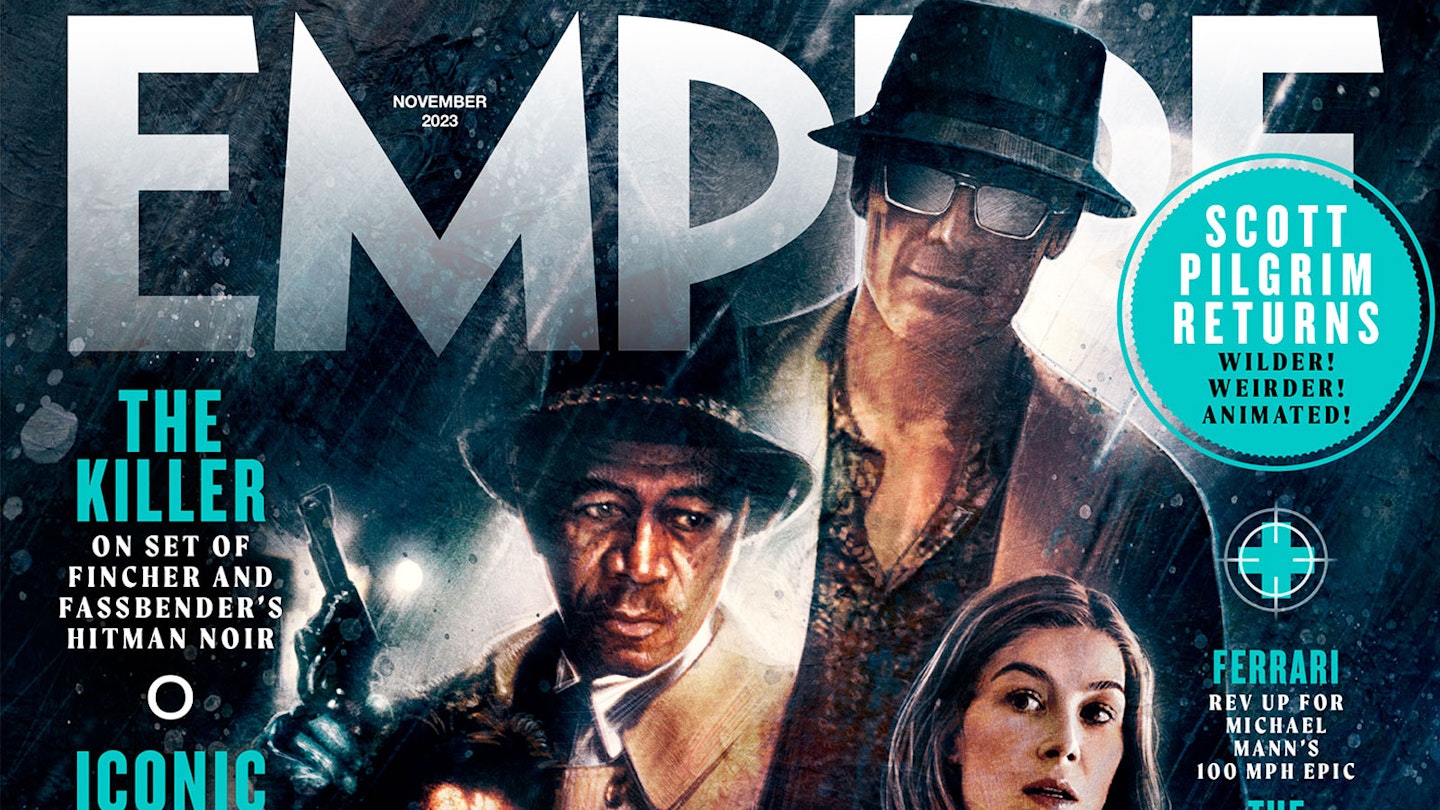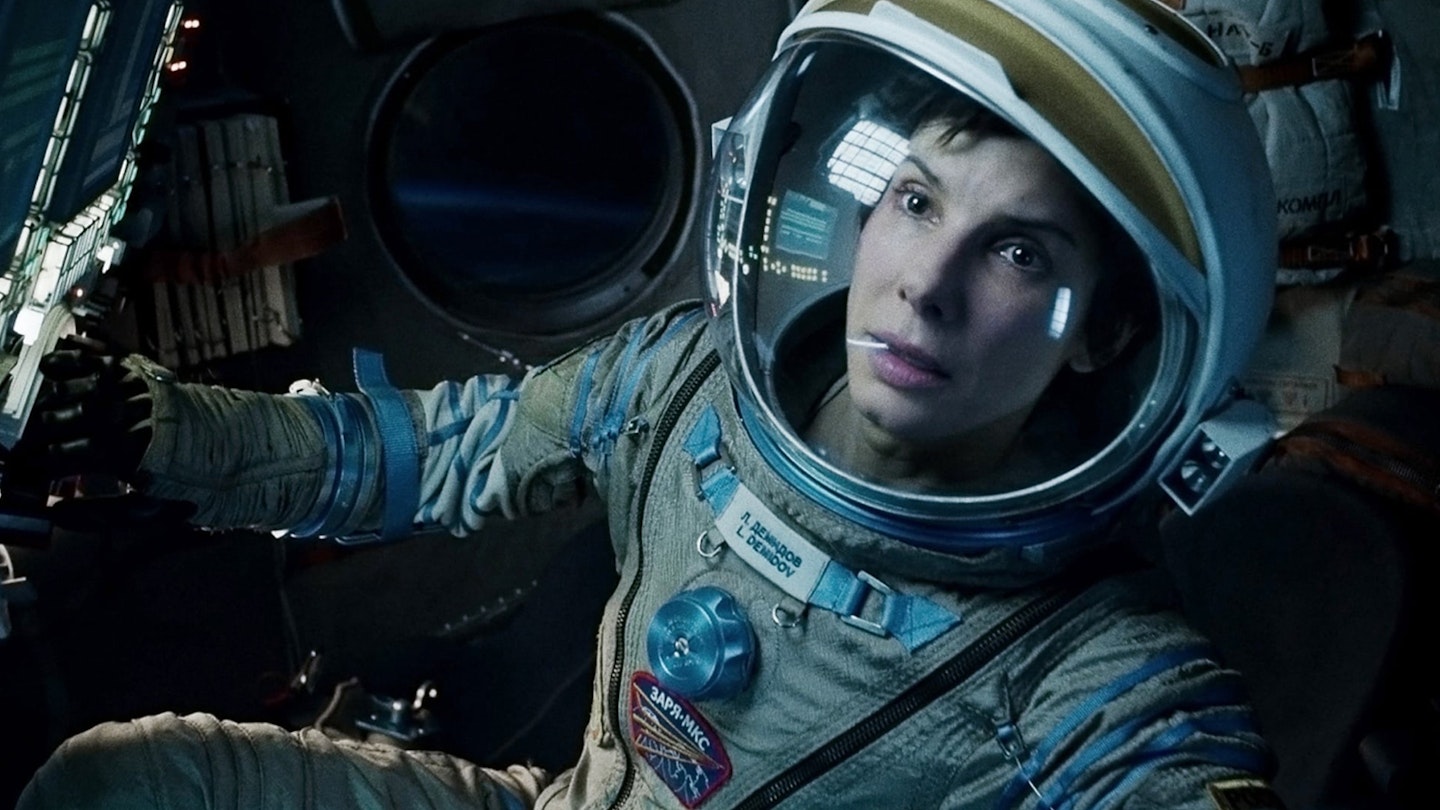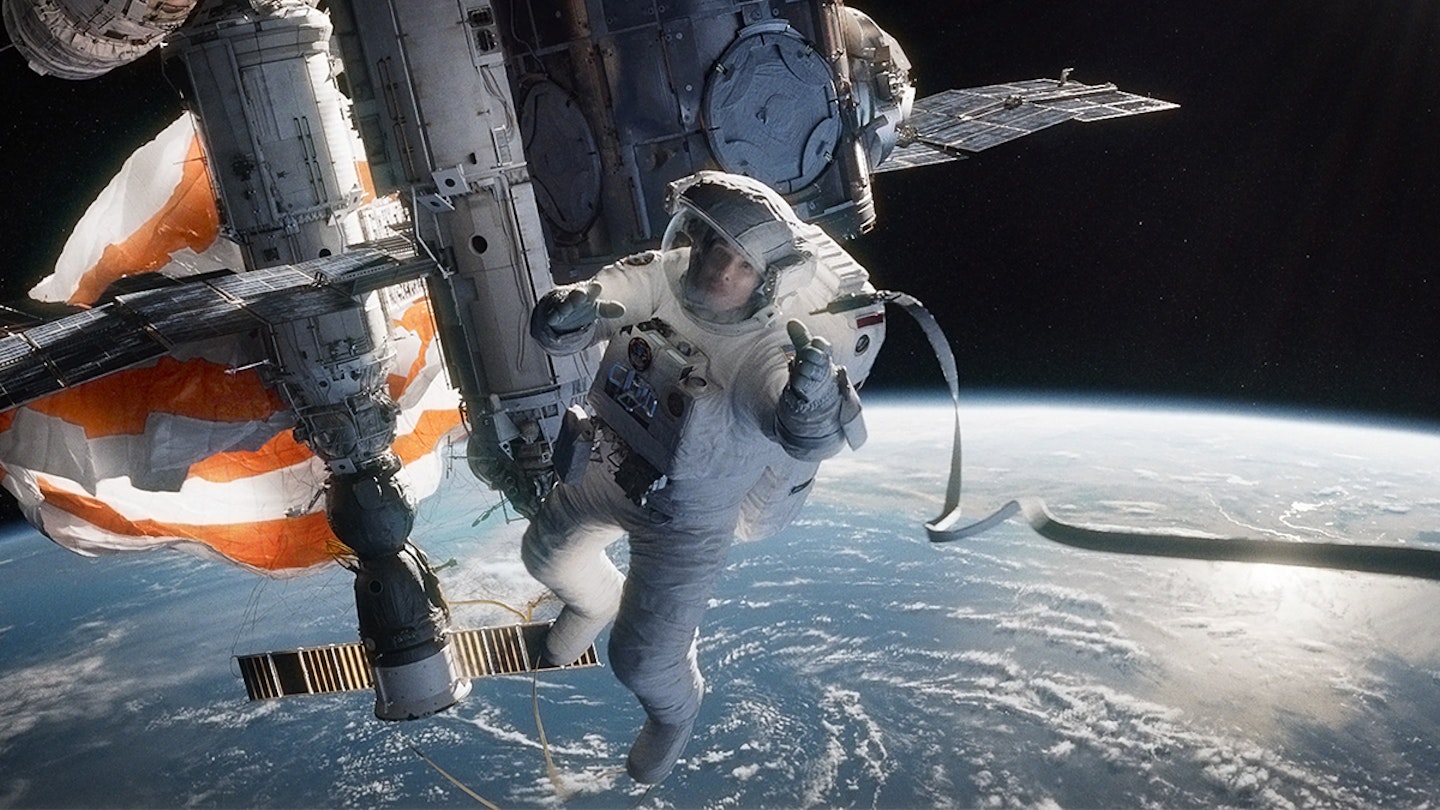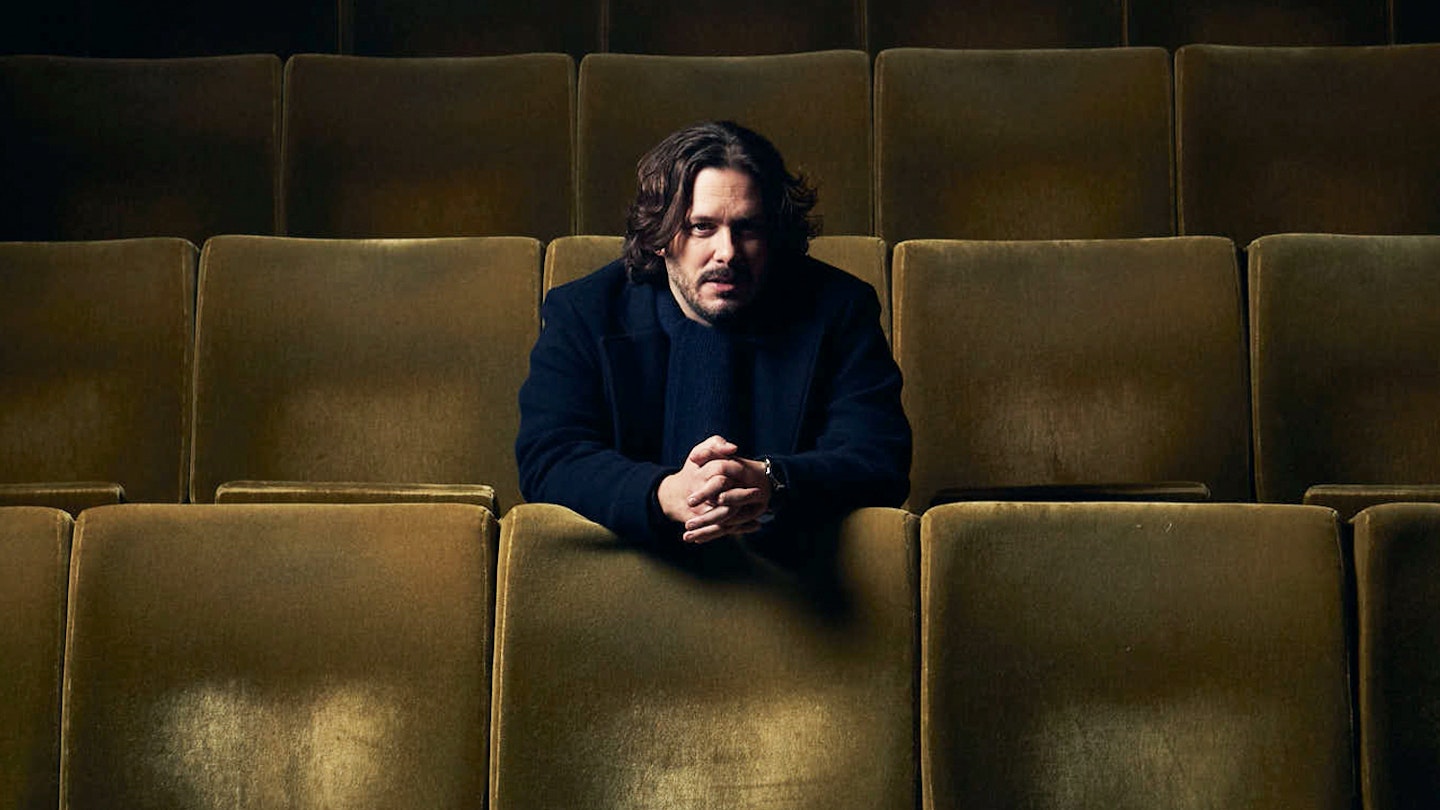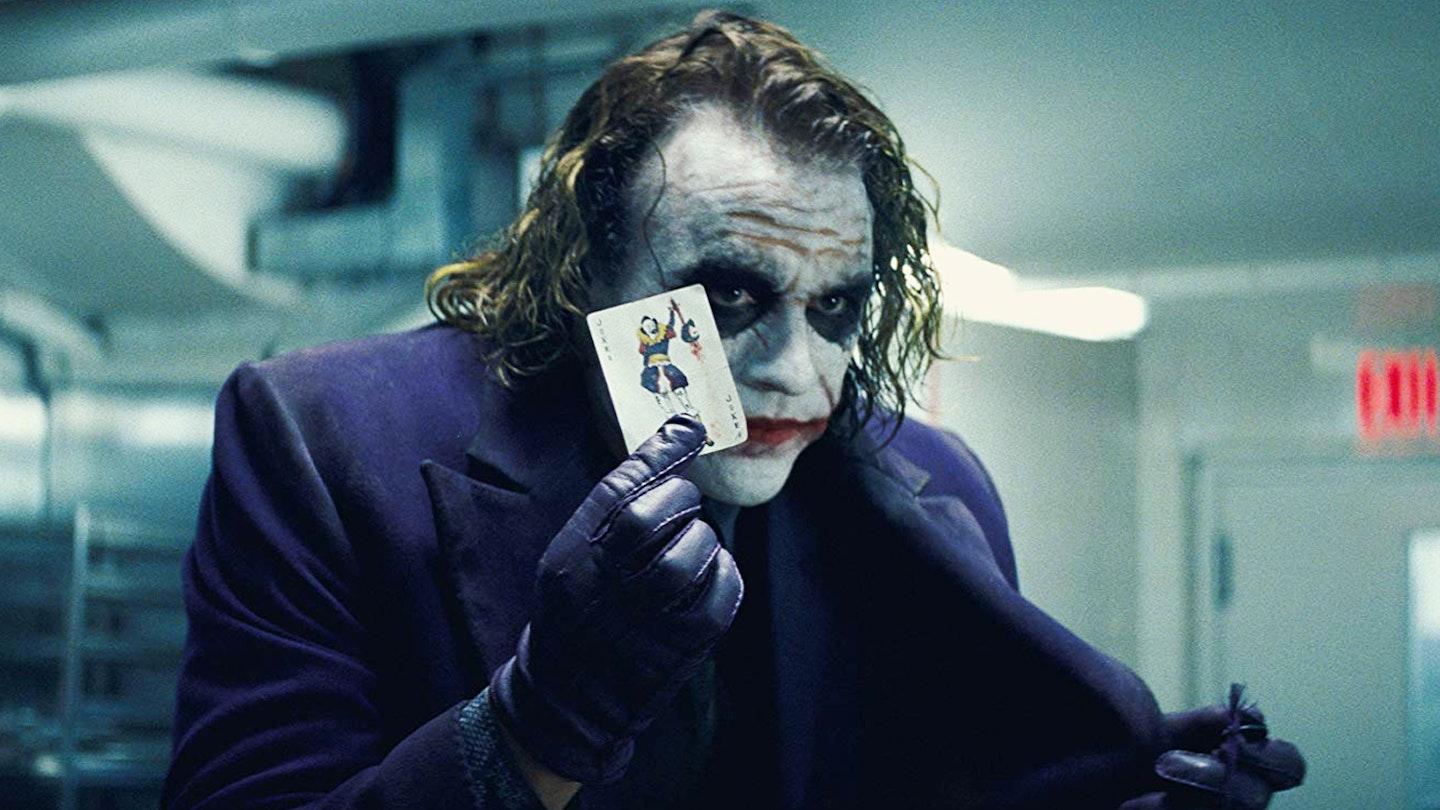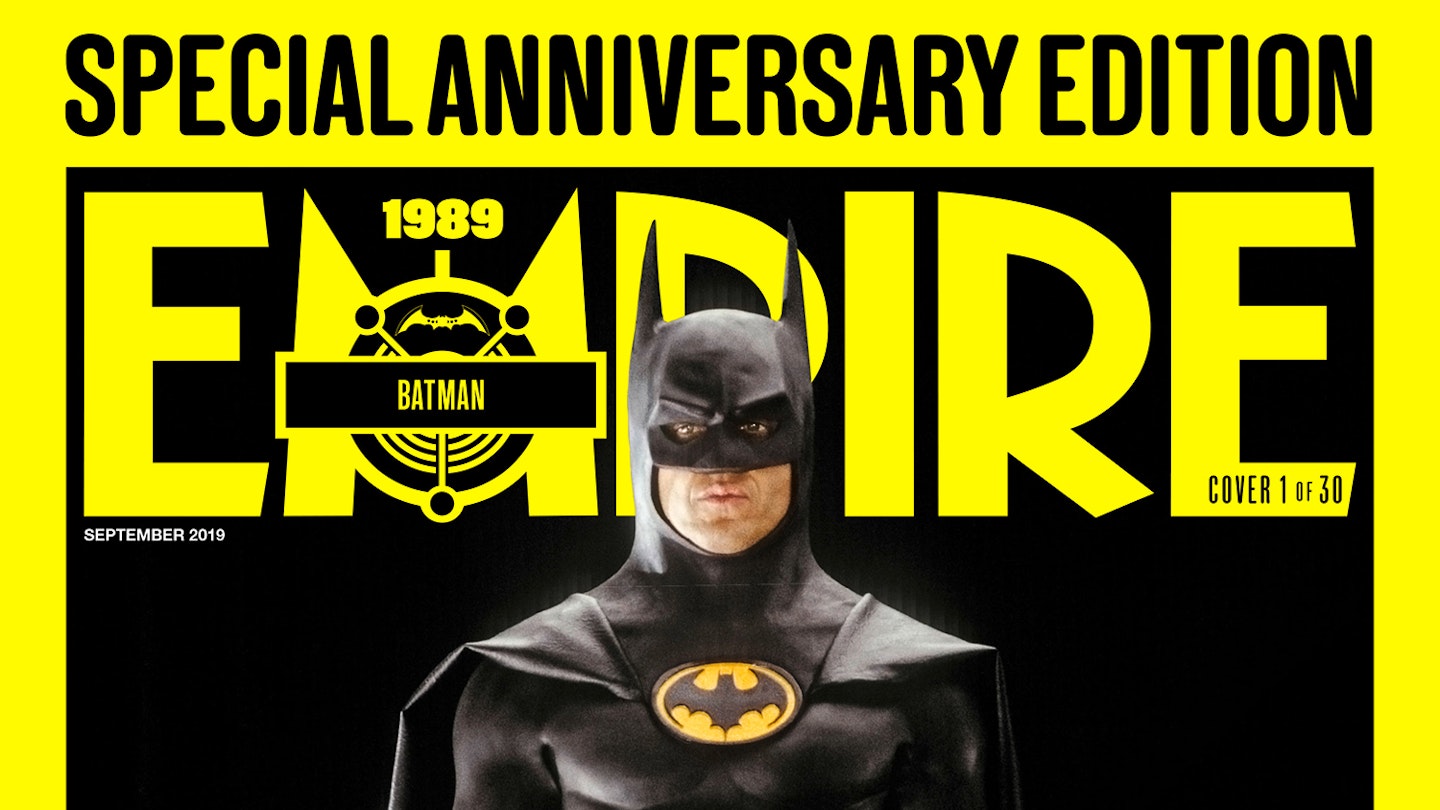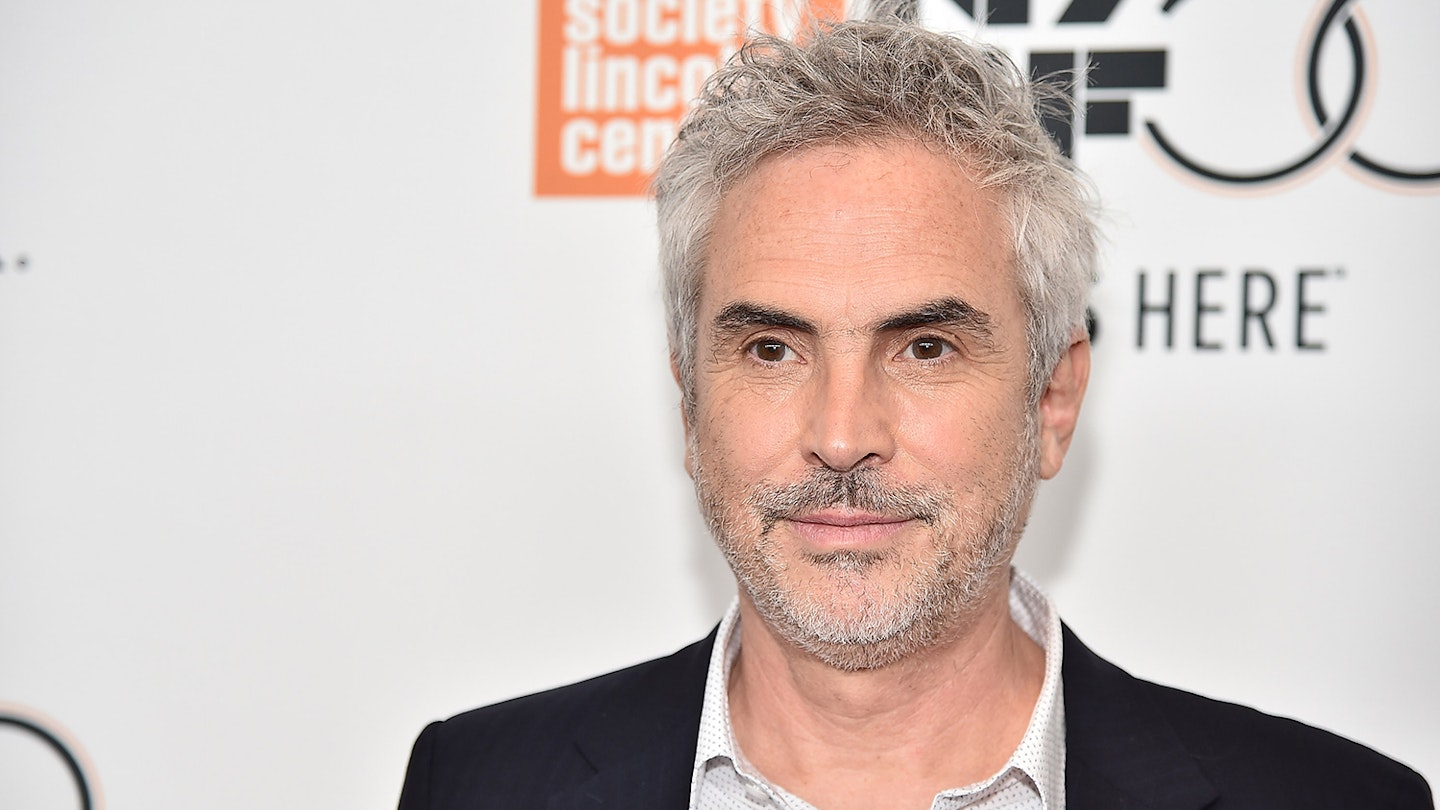Let’s cut to the chase. The simple truth of the matter is you’re going to love this movie. Love it, because it does something almost forgotten in this modern era of blockbusters seeded on complex mythologies and ripened with years of hype. Directed by conspicuous absentee Alfonso Cuarón, whose skilled palate has run to horny Mexican teenagers, dystopian London and Hogwarts, and co-conceived and written with his son Jonas, Gravity asks for nothing more than your surrender. Be seated, don your 3D glasses (and 3D is its medium), and let it unfold. No prior knowledge required.
Without the fuss of backstory or intro — just a caption starkly pointing out why life in space is “impossible” (primarily a distinct lack of oxygen) — we cut straight to now. Exterior. Night. The forever-night of outer space, but dominated by the vast blue-grey nimbus of Earth’s curvature, cloud formations silently spiralling across the surface in tiny, leisurely movements. It’s a jaw-dropping view from God’s balcony, CGI so good it doesn’t resemble CGI. Earth will remain a constant — the literal pull of home. Meanwhile, as a tiny speck in the foreground slowly takes shape, the breathy, scratchy transmissions of spacesuit intercoms break into the church-like hush.
Among Cuarón’s apparently bottomless bag of tricks is a near-constant stream of dialogue: between astronauts, with Houston, the odd delirious monologue and remonstration with the universe at large. Indirectly, the desperate participants will narrate the film. When the worst happens (and it’s going to very soon), the heroes will experience a chilling abandonment when contact with home is broken. But they keep talking, hoping to be heard, issuing their voices from, in NASA jargon, the “blind”. Who knows, God might also be listening.
The aforementioned mysterious shape resolves itself into the sleek underbelly of a shuttle conjoined with the Hubble telescope, forming a clutter of mechanical appendages like a Transformer with its trousers down. This is contemporary space, the recognisable tech of our own time. Then, with gathering momentum, the camera begins a geometrically unreadable journey, left and up and in and around along the disorientating trajectory of a fairground ride. The quantity of calculations it must have taken to chart the baroque flight paths of each ‘shot’ in Gravity is mind-boggling. Then factor in the computer-generated space stations, the free-floating screws, the weightless teardrop that mirrors a stricken face.
Remember, nothing in Gravity was shot in zero-G. When we meet the astronauts, one jet-packing towards us, the other tethered to the telescope, every bob and weave of frictionless movement has been plotted out, frame by frame. Stanley Kubrick would be on his feet applauding. The team are midway through a routine spacewalk, upgrading the telescope, when mission control pipes up. Elsewhere over the Earth’s atmosphere an errant Russian missile has destroyed a satellite, releasing a meteor shower of man-made shrapnel into orbit. Nothing to worry about. There’s no overlap of trajectory. Just be aware.
The astronauts return to their movie banter, led by the dusty anecdotes being told by George Clooney’s seasoned rocketeer, Matt Kowalsky. He smirks that he’s “got a bad feeling about this one”. It’s the last mission for the cocksure veteran, and his charming, offhand — yes, Clooney-esque — manner is clearly designed to settle the erratic nerves of Sandra Bullock’s rookie specialist Dr. Ryan Stone, only six months of basic under her belt. maelstrom. As Kowalsky strains to retain command, Stone’s umbilical is severed, and she is sent somersaulting out into the dark, shrieking in blind panic. Only now does the film make its first cut.
Sure enough, an ambient hum begins to build like a quickening pulse or the drone of Kubrick’s monolith, the dread harbinger of disaster. With Steven Price’s soundtrack effectively doubling as atmospherics, this background throb slowly registers as a musical chord. Houston starts shouting. Mission abort. An unforeseen chain reaction has swept the debris in their direction, effectively transforming it into a hailstorm of razor-edged metal hurtling at the velocity of a “high-speed bullet”. To the first quivering crescendo of Price’s electronica, chaos is unleashed: metal pulverised, gantries spiralling, the camera tossed loose in the maelstrom. As Kowalsky strains to retain command, Stone’s umbilical is severed, and she is sent somersaulting out into the dark, shrieking in blind panic. Only now does the film make its first cut.
This opening sequence runs for, what, ten minutes? Easily enough time to scatter our preconceptions of cinema across the universe before plunging us into the abyss. To liken it to a sinewy Scorsesian tracking shot or the duck and weave of a De Palma Steadicam, both so Earthbound, is to miss its elemental freedom. Cuarón has found a way to untether his film from gravity. There is no natural horizon on which to fix our bearings, and the 3D only intensifies the disorientation. We have been hurled loose from the tradition of passive observer. When we catch up with Stone, the camera dares the impossible. After a second’s hesitation (as if waiting for the director to take the plunge), it passes through the veil of her visor for an extreme close-up of Bullock’s face, locked in a rictus of fear, before swinging 180 degrees to become her point of view: fragments of the shuttle and Hubble diminishing into the distance...
No film since 2001: A Space Odyssey has so fully communicated the absoluteness of space — its impossible vastness, its obliterating void. Yet Gravity is existential in a real sense; there will be communing with distant alien brains. A marvel of filmmaking reach, it is a testament to what can be achieved with modern technologies set the challenge of putting the audience at the absolute centre of the most extreme jeopardy imaginable — to be adrift in space. The nearest thing, and Bullock helps the analogy, is the high-concept purity and vice-like grip of Speed. The story is consumed by the immediacy of its dilemma. How will they survive?
So if it is made with Kubrickian grandeur and paradigm-shifting ambition — and Cuarón and his cinematographer, Emmanuel Lubezki, extended their post-production to press and press again at the envelope of their vision — it still plays with the breakneck dynamics of the best disaster movies. Like a ticking bomb that keeps resetting itself, the orbiting debris will keep swarming back in their direction. Actually, it’s as if Kubrick and James Cameron formed an unlikely creative alliance (God knows who made the tea): the meticulousness of a chess grandmaster applied to the blood-rush of matinée excitement.
The ingredients of the fight for survival should be left for you to discover. Suffice to say, Cuarón and his son have written it in such a way that it is spellbinding yet believable. Science serves the movie, and the movie obeys science. There are cunning shifts in environment, herculean trials by fire, water and technology, all driven by that Speed-like escalation where one solution only heralds the next nightmare scenario. And still Cuarón imagines beauty amid crisis, art, no less: visions of rebirth, a sublime use of reflective surfaces, destruction as phantasmagorical ballet and lens flare to make J. J. gently weep.
And Gravity, as title, refers as much to the performances as the concept; Cuarón draws as deeply from his actors as his effects team. Bullock’s Stone especially is sent inward, towards a tragic backstory, to ignite her will to live. Room is found for painful intimacy, delving for what keeps us going faced with all-but-insurmountable odds. We clock icons of belief — Buddahs and Christs — suggesting the universe might offer other forms of salvation. So, finally, this is a story about our sheer, dogged insistence on staying alive. However complex and awe-inspiring the film’s execution, Cuarón’s mission is to celebrate the phenomenon of life.
